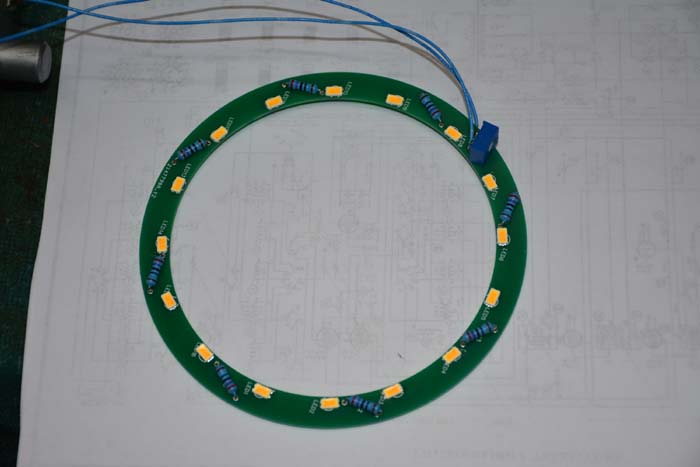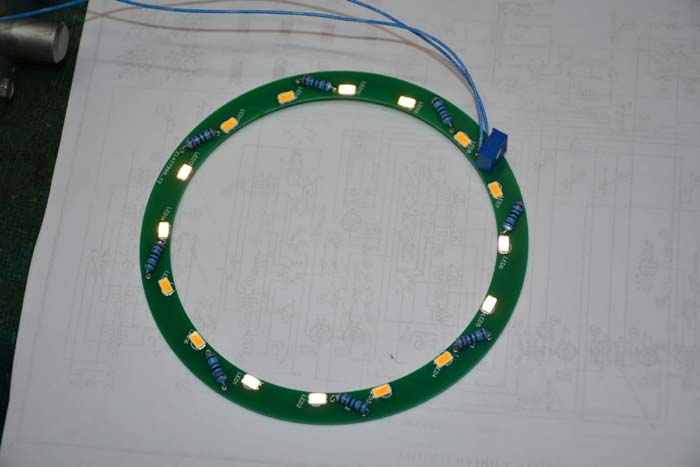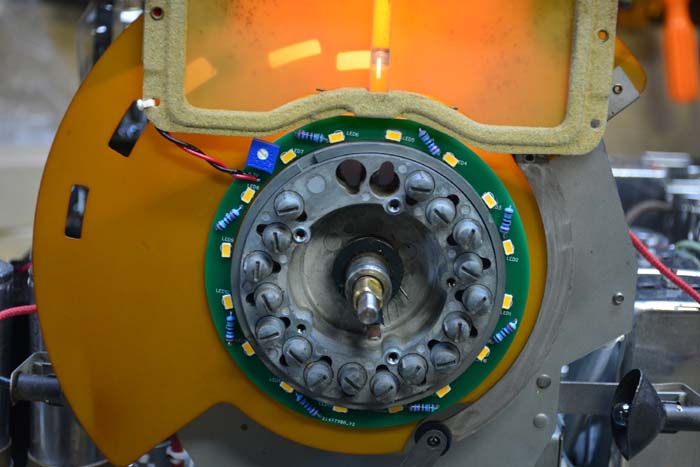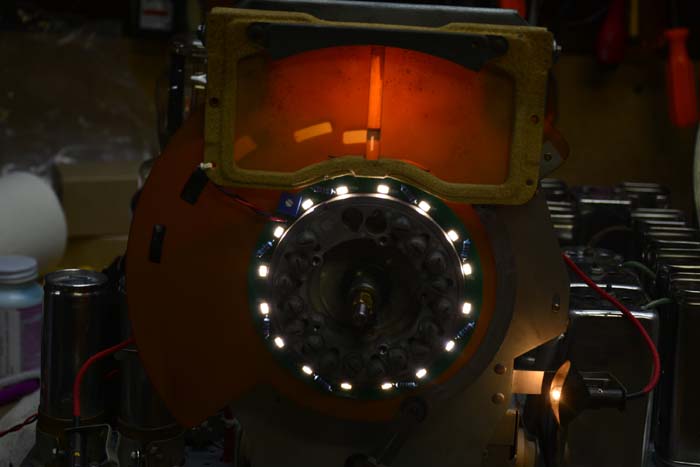01-16-2020, 11:10 PM
I printed the station tabs in the previous photo on ordinary photo paper. I need to find some printable, translucent material to print the tabs. The photo paper is very readable in normal light but not very translucent. When the "magnetic tuning" is ON, the tabs are supposed to be backlit by 2 lamps reflecting off from a reflector ring, the light passing through the shadow mask and the tuning dial before lighting the back of the tabs - not very effective, especially with the tabs printed on paper. So, a new, easily removable backlight system has been incorporated. I had a circuit board made that incorporates 16 LED's that is powered by the 6.3 volts from the magnetic tuning lighting system.


The second photo indicates that half the LED's are dead. Not really! The LED's are powered from the AC voltage from the filament supply. 2 are in series that will light on the positive half of the AC, while the next 2 are series to light on the negative half of the AC . The LED's actually alternately flash on and off at 30 cycles per second. My shutter was set at 1/125 so it caught only half of the LED's lit. I do the alternating routine to reduce the apparent 30 cycle flicker. Next is a photo at 1/30. I thought that was interesting, but maybe it's only me!

Here's the system installed in the autotune system. It is in the space between the band selector shadow mask and the tuning dial.


The second photo indicates that half the LED's are dead. Not really! The LED's are powered from the AC voltage from the filament supply. 2 are in series that will light on the positive half of the AC, while the next 2 are series to light on the negative half of the AC . The LED's actually alternately flash on and off at 30 cycles per second. My shutter was set at 1/125 so it caught only half of the LED's lit. I do the alternating routine to reduce the apparent 30 cycle flicker. Next is a photo at 1/30. I thought that was interesting, but maybe it's only me!
Here's the system installed in the autotune system. It is in the space between the band selector shadow mask and the tuning dial.



